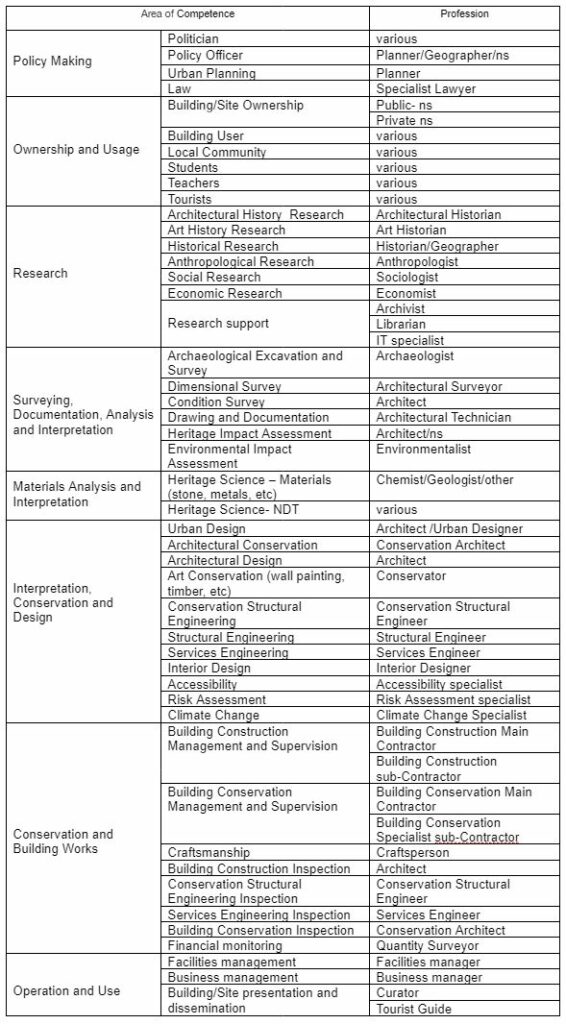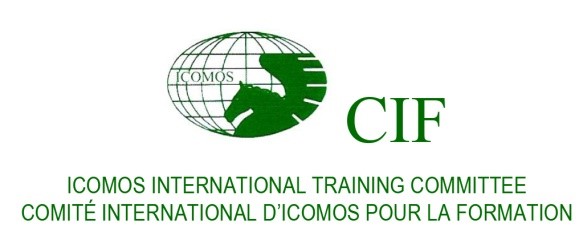Decalogue for Education in Architectural Conservation ICOMOS CIF 2023
Dedicated to the memory of two outstanding architectural conservation specialists and educators: the Architect Maria Letizia Conforto, who suggested to summarize the outcomes of CIF 2022 Symposium in Florence as a Decalogue, and to Professor Giovanni Carbonara who contributed to the text, highlighting the need for a cultural approach to conservation and the need for architects to lead architectural conservation projects.
The Decalogue has been written by Dr Cristina Gonzalez-Longo, President of ICOMOS CIF as a summary of the presentations and discussions during ICOMOS CIF 2022 Symposium.
To be read in conjunction with the ICOMOS Guidelines for Education and training in the conservation of Monuments, Ensembles and Sites (1993)
Architectural conservation students and practitioners need to have an ethical and cultural approach. The purpose of architectural conservation is to benefit all of humanity (current and future generations).
The complexity of subjects involved in architectural conservation require capacity of analysis and synthesis. This should be developed from the early years of education and continue throughout people’s career.
The starting point for an architectural conservation project is the appreciation of the specific building and site and their significance. This requires a solid knowledge, understanding and interpretation of architectural history and conservation history, also in its social, economic and political context.
A scientific approach is required for the selection of well-tested and appropriate methodologies to study, assess and interpret built heritage. Appropriate methodologies should be selected, adapted and applied to individual buildings and sites. All the suitable and available technologies, including software and equipment should be used, but remembering that these are only tools. What is critical is the rigour with which the data is captured and processed and the knowledgeable interpretation of the results.
Effective architectural conservation requires the appropriate initial assessment of the buildings and sites. Buildings need to be analysed, assessed and understood as complex systems. It is of crucial importance to understand their materiality, to know how they were built, how they have changed over time, how they performed originally and now.
Architectural conservation requires an architectural design project addressing the causes of deterioration and producing a design that allows to conserve the existing building and site, using or reusing them in an appropriate way. The architectural design project allows to devise the most appropriate architectural conservation, which includes the use of the building and the achievement of comfort for the occupants, as well as the minimum energy consumption.
Crucial in architectural conservation – and in architectural in general-, is the ability to express and communicate integrating texts and drawings and using common terminology and graphic standards. These need to be universally agreed and consistently employed; equivalences for different languages should also be established, so that cultural richness is also conserved.
Education and training in architectural conservation should include the issues concerning the conservation and enhancement of beauty as well as the technical ones. To upgrade buildings for energy issues should not negatively impact in their significance and beauty, as it will not then be conservation but destruction.
Any course, long or short, should have a clear scope and level of learning and this has to be clearly advertised. Comprehensive and well-structured continuing professional education is very important to up-skill professionals already working in the field of architectural conservation without a solid education on it.
Collaboration between all occupations and professionals involved in conservation is very important for the successful delivery of architectural conservation projects. Expertise has to be clearly established so that professionals operate within their own area of competence. Thereafter, specialist conservation architects should be leading architectural conservation projects, as they are the competent professionals who have the overall understanding of buildings. They should have the required education, training and continuous professional development.
ICOMOS CIF: Areas of competences and related professions involved in the conservation, management and use of built heritage.
Please get in touch with CIF cif@icomos.org if you have or know of other relevant competences and professions in your country or region that you think should be included.

